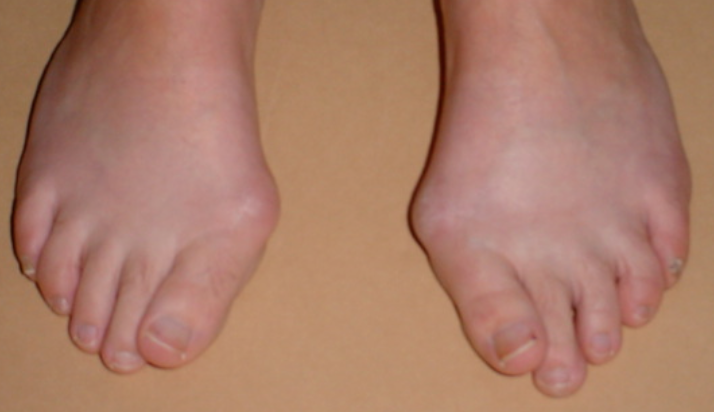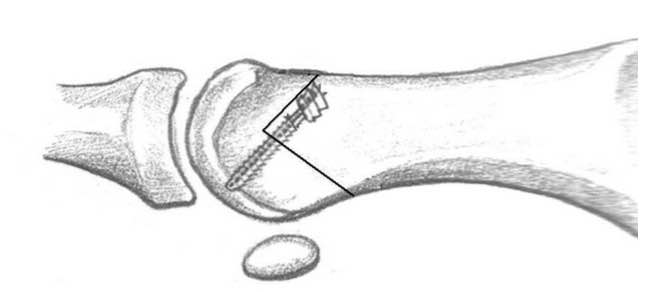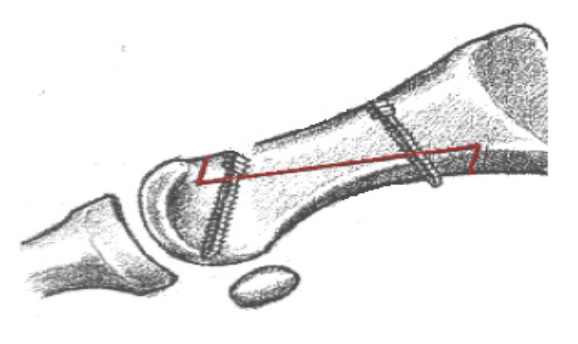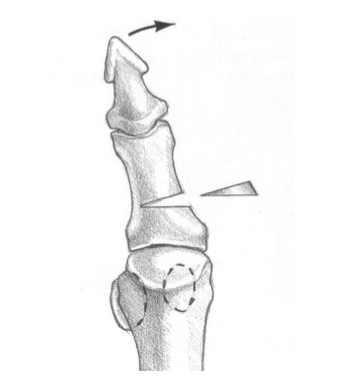These pages offer advice only. They are not a substitute for a proper consultation.
Bunions and Osteotomies for Hallux Valgus

BUNIONS
What is a Hallux Valgus (Bunion)?
The big toe of your foot is called the Hallux. If your big toe starts to deviate (turn) inward in the direction of your little toe (valgus), the condition is called Hallux Valgus. As your big toe moves over, a bump starts to develop on the inside of your big toe over the metatarsal bone. This bone prominence (bump) is called a bunion.
Bunions may be hereditary but can also be caused or aggravated by footwear. The condition is more common in women than in men. Once a bunion appears, the deformity of Hallux Valgus worsens slowly over time.
What is an osteotomy?
An osteotomy for hallux valgus consists of shaving the bunion (exostectomy) in combination with a planned cut of the 1st metatarsal bone and then sliding of the bone to narrow the foot.
For less severe deformities, a Chevron Osteotomy is used and a small screw is inserted into the bone to
hold the repositioned metatarsal head in place.

A Scarf Osteotomy (named after a woodworking term) is used for moderately severe deformities and a long “Z” shaped cut is made, the bone
repositioned, then two small screws are inserted into the bone to hold the
metatarsal head in place. The use of small screws, deep in the bone
ensures the new position is maintained and reduces pain.

In addition to a Scarf or Chevron osteotomy your surgeon may advise
you to have another surgical procedure at the same time, in order to
achieve further correction.This is known as an Akin osteotomy and involves a small wedge
shaped cut into the bone at the base of your big toe. The gap is then
closed and the two bone edges are then joined together using a small
screw or staple inserted into the bone.

Bunion surgery can be done as a day case, but you may have to stay in
hospital overnight. This depends on your recovery, how many toes have
been operated on, the time of day of your operation and your general
condition.
What are the benefits of having an osteotomy for a Bunion?
The aim of the procedure is to ease your pain and discomfort where this has been quite severe and disruptive to your everyday life. Your surgery should allow you to wear your footwear more comfortably.
What are the risks of having an osteotomy for a Bunion?
Approximately 85% of people enjoy success after surgery and are pleased with the results. About 10% feel better but have reservations. About 5% are disappointed and these are usually patients who have developed wound infections or painful nerves or significant recurrence of deformity after surgery.
If you are a smoker and are about to undergo an osteotomy, we strongly advise you to stop smoking for at least one week before surgery and for eight weeks after your surgery. By doing this you are lessening the risk of developing a clot and you will find the healing process similar to that of a non-smoker.
Are there any alternative treatments available?
If you decide not to have surgery, you may receive advice
regarding more suitable footwear. If appropriate, your surgeon may refer
you to the orthotist for an assessment with a view to supplying special
insoles, which may also help you to manage your symptoms. In addition, silicon gel spacers and protectors can be of help.
What will happen if I don’t have any treatment?
If you decide not to proceed with any treatment, then it is likely your symptoms and condition will progress.
Do I need physiotherapy after my operation?
A physiotherapist will assist and advise you to use crutches and walk in the post-operative sandal. You will be given an outpatient appointment to see the physiotherapist to advise on mobilisation of the operated joint.
Will I Need Further Appointments in Outpatients?
You will be followed up in outpatient clinic 10 to 14 days after your surgery when your wound will be checked and any sutures removed. At this stage, your bandages will be removed and any dressings changed. You will be shown how to apply a removable splint. It is important that this stays on for most of the day and night and the post operative sandal used for walking. You will then return to follow-up clinic four weeks later, an X-ray will be performed to ensure the bones are healing and you will be re-introduced to normal footwear again, which should be flat and roomy e.g., trainers
Further Information and Help After Surgery
If you have any queries or concerns after your surgery, you can contact us on the telephone numbers below
Spire Liverpool Hospital OPD - 0151 733 7123
The Bone and Joint Centre - 0151 522 1860